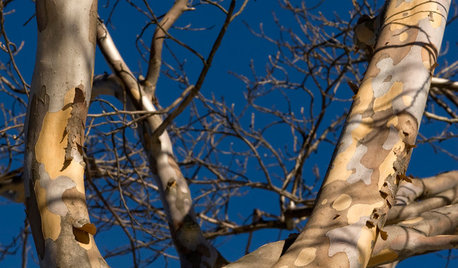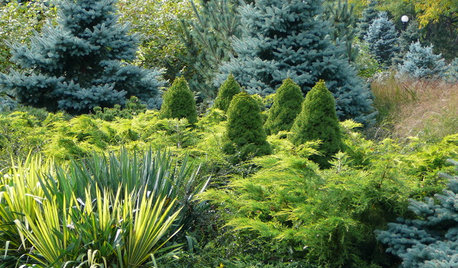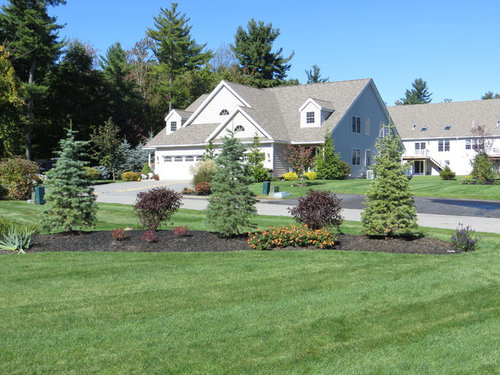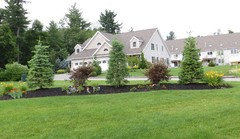Sick Abies concolor?
WendyB 5A/MA
8 years ago
Featured Answer
Comments (37)
Dan _Staley (5b Sunset 2B AHS 7)
8 years agoEmbothrium
8 years agolast modified: 8 years agoRelated Discussions
Abies lasiocarpa or Abies concolor?
Comments (8)Here you go! Keep in mind some plants just don't have as nice a color here in the Midwest. The older needles look like A. concolor thats why I was leaning that way. One plant died during its flush when I received it and I took the tags off the day of....See MoreAbies Concolor - Desert concolor
Comments (5)If you haven't already, visit with the folks at the Plants of the Southwest nursery. I was in Albuquerque for a conference in June and was looking for something to take home. They were highly recommended. Their nursery doesn't look like much from the outside, but it was full of treasures, and they know their material. I managed to bring home a 2 gal. cholla on the airplane, which is doing super-fine, but that's a story for a different forum....See MoreAbies concolor 'candicans' cones
Comments (1)Gotta love those Abies cones. Too bad they are so, how shall I say it, ephemeral. lol tj...See MoreHeat stressed Abies concolor (archers dwarf)
Comments (9)I thought I did a good job placing this plant. It gets full sun until about 2:00 everyday and then it is shaded by the house. When I first planted it I thought, maybe it's not getting enough sun. This really sucks losing this guy. It did well the first and now I have to watch it die. This is the second conifer I've lost this year! I thought I was taking good care of these things....See MoreWendyB 5A/MA
8 years agoSmivies (Ontario - 5b)
8 years agoken_adrian Adrian MI cold Z5
8 years agoEmbothrium
8 years agolast modified: 8 years agoDan _Staley (5b Sunset 2B AHS 7)
8 years agoWendyB 5A/MA
8 years agotsugajunkie z5 SE WI ♱
8 years agoWendyB 5A/MA
8 years agoEmbothrium
8 years agolast modified: 8 years agodavidrt28 (zone 7)
8 years agolast modified: 8 years agoMike McGarvey
8 years agoakamainegrower
8 years agoDan _Staley (5b Sunset 2B AHS 7)
8 years agoedlincoln
8 years agodavidrt28 (zone 7)
8 years agolast modified: 8 years agoedlincoln
8 years agolast modified: 8 years agoWendyB 5A/MA
8 years agoedlincoln
8 years agoWendyB 5A/MA
8 years agoDan _Staley (5b Sunset 2B AHS 7)
8 years agoWendyB 5A/MA
8 years agoLogan L. Johnson
8 years agoUser
8 years agolast modified: 8 years agoWendyB 5A/MA
8 years agoken_adrian Adrian MI cold Z5
8 years agogardengal48 (PNW Z8/9)
8 years agoWendyB 5A/MA
8 years agoDan _Staley (5b Sunset 2B AHS 7)
8 years agoWendyB 5A/MA
8 years agoMike McGarvey
8 years agosplaker
2 years agosplaker
2 years agolast modified: 2 years agotsugajunkie z5 SE WI ♱
2 years agosplaker
2 years ago
Related Stories

WINTER GARDENING8 Gorgeous Trees for Winter Interest in the Garden
Intriguing forms and beautiful branches take center stage when color heads back into the wings of the winter landscape
Full Story
LANDSCAPE DESIGNWarm Up Your Home With an Evergreen Windbreak
Plant tall trees for more warmth in winter, serenity in summer and good looks all year long
Full Story
PLANTING IDEASDesigning With Conifers: Layers of Texture for Your Garden
Sharp and prickly or fine like ferns, richly textured conifers bring unexpected interest to the landscape
Full Story









bengz6westmd